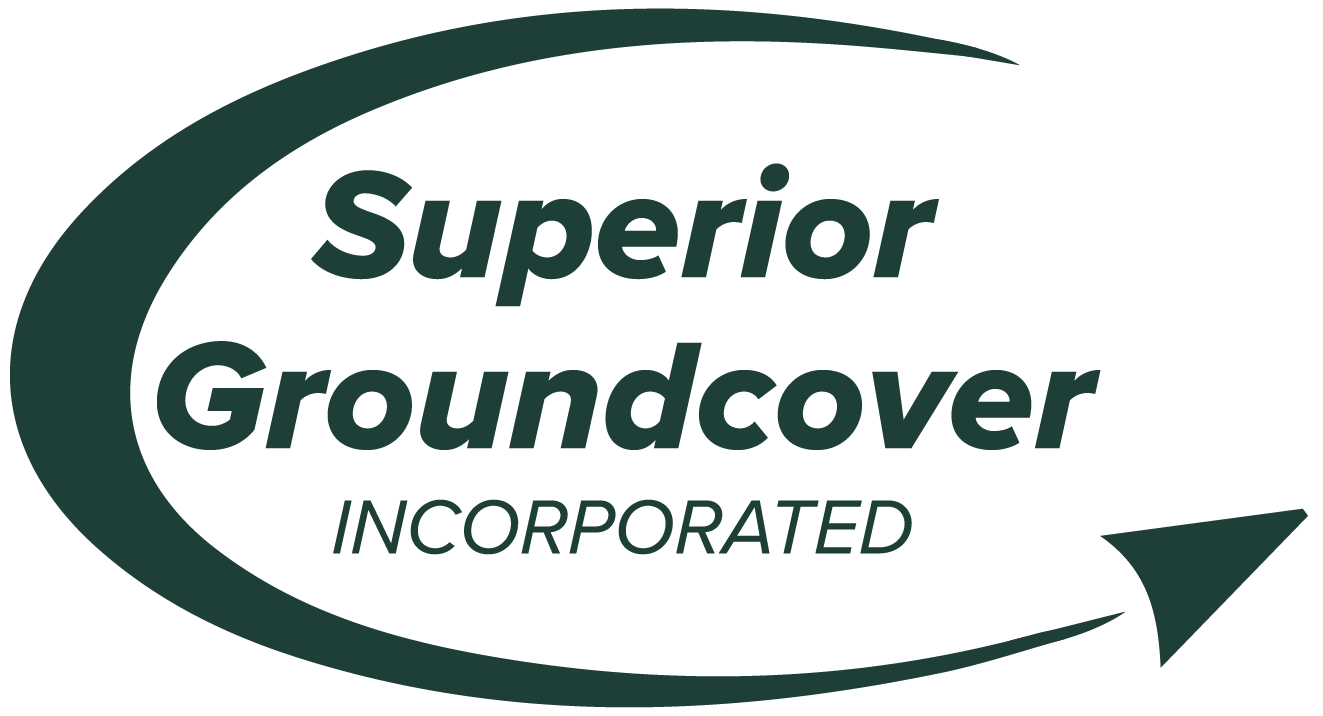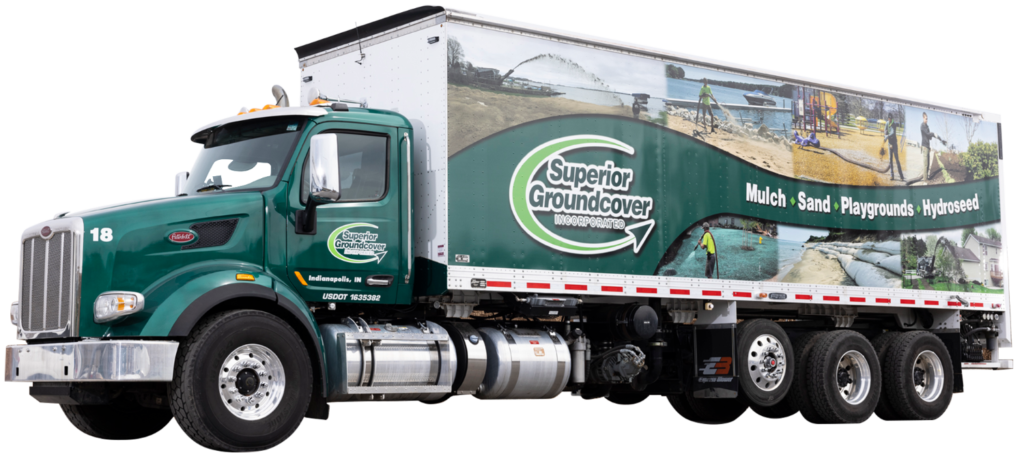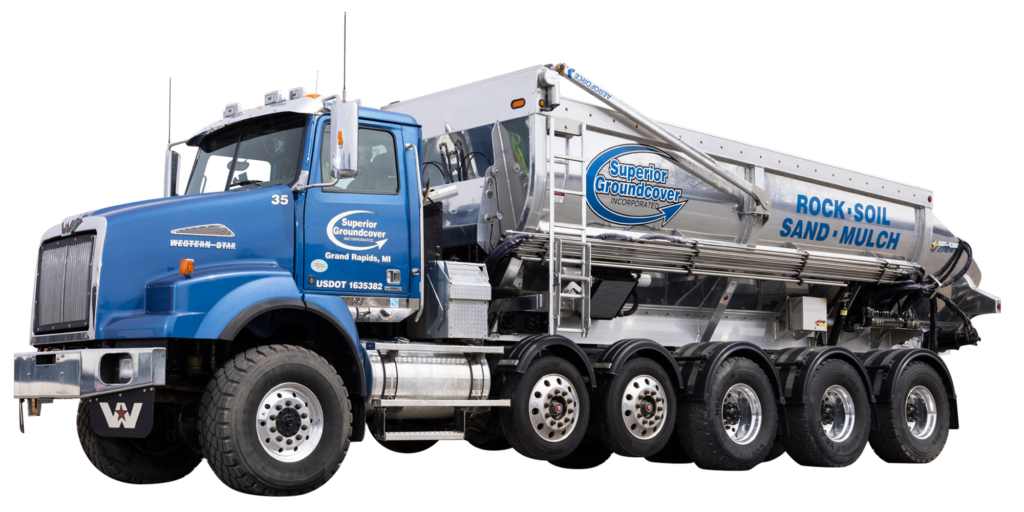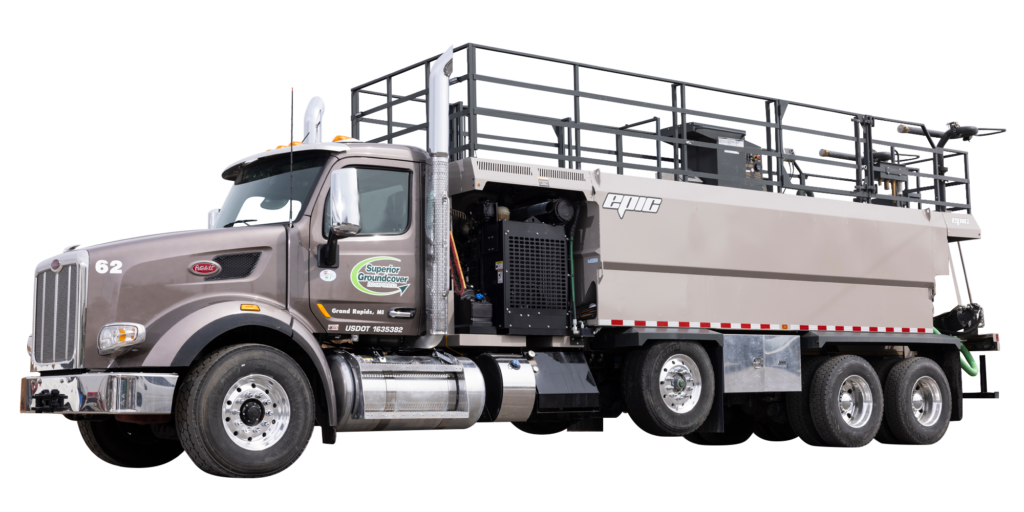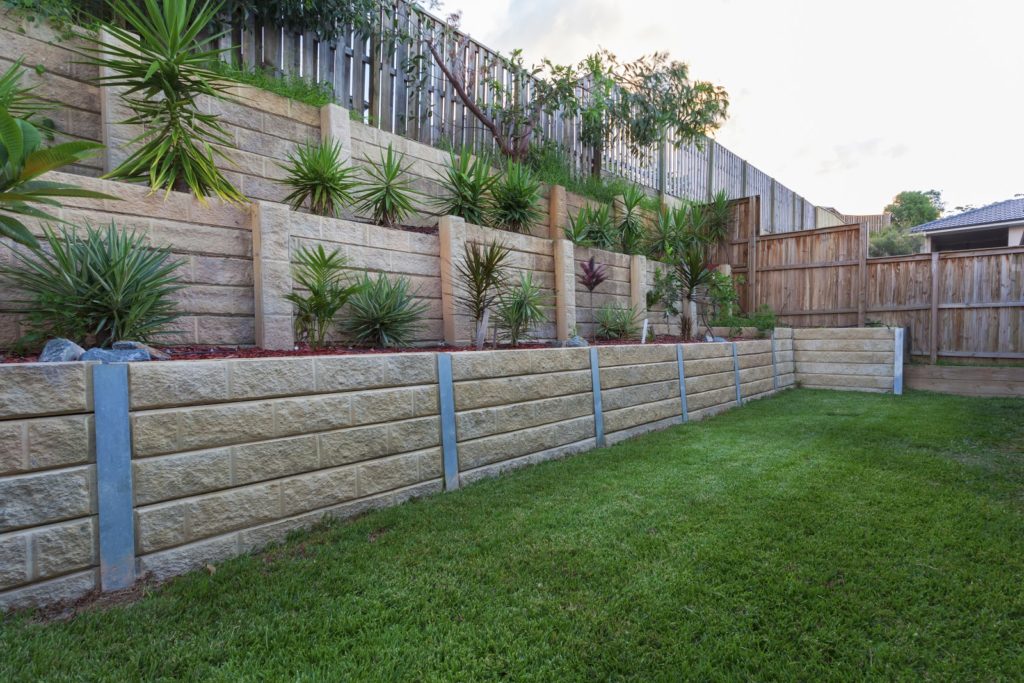Erosion happens when soil is displaced. There are lots of reasons erosion occurs including human and natural forces.
“While geological or natural erosion can produce nearly thirty (30) percent of the total sediment in the United States, accelerated or “man-made” soil erosion accounts for the other seventy (70) percent of sedimentation found in the U.S. Activities ranging from surface mining, forestry, agriculture and construction are all actions which influence accelerated erosion.” — Stormwater One
Often, wind and water cause erosion. When erosion occurs, property can be damaged or lost. In order to maintain and protect property as well as natural habitats, erosion control methods are sometimes necessary. Here, we will explain some slope and shoreline stabilization techniques to prevent and control erosion.
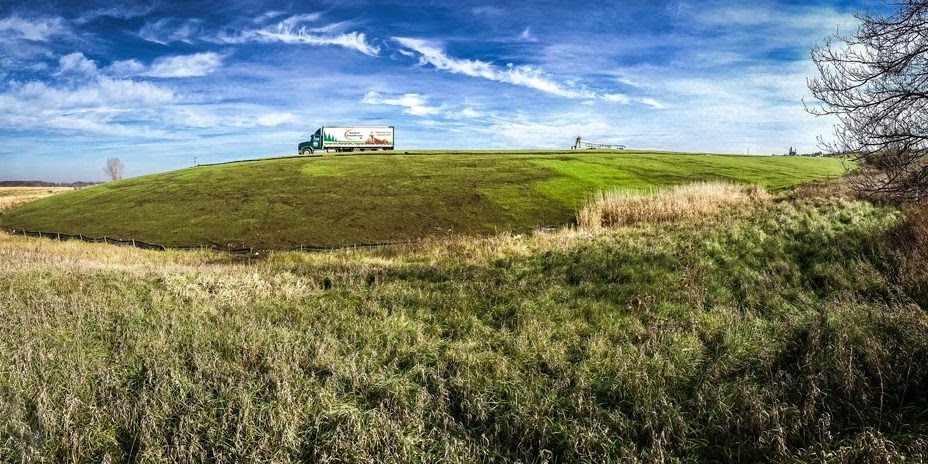
What are useful erosion control solutions?
The only permanent erosion control solution is replanting. When people remove vegetation, erosion is much more likely to occur. This is because plant root systems help hold soil in place. Along the coasts, property owners frequently remove unwanted vegetation in order to create a more ideal beach. Unfortunately this results in worsened erosion and property damage. Because replanting is not immediate, other temporary solutions are often needed while the root systems develop.
No single erosion control method will work for all situations. Make sure to look into the geography and climate in your region before investing in one specific erosion control method. These methods are also often used in combination to create a more effective erosion control system.
Filter Socks (Compost Filter Socks)
Filter Socks are mesh tubes that work to trap pollutants from stormwater and can be used for slope stabilization on slopes that are as steep as 2:1. They can be used in many applications including: sediment control, as a dam to prevent soil erosion, storm drains, slope interruption, and more.
Superior Groundcover uses 100% organic materials for all erosion control and Terraseeding® applications. Filtrexx® compost filter socks are used for sediment control, slope protection, stream bank and shoreline stabilization, and vegetated retaining walls. Tired of trenching a silt fence? Try our filter socks on for size!
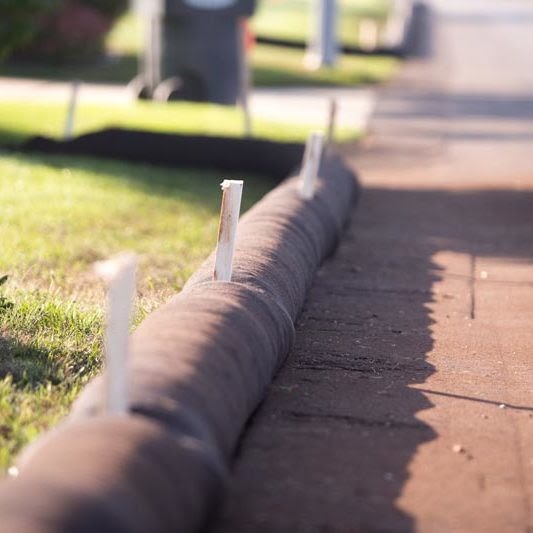
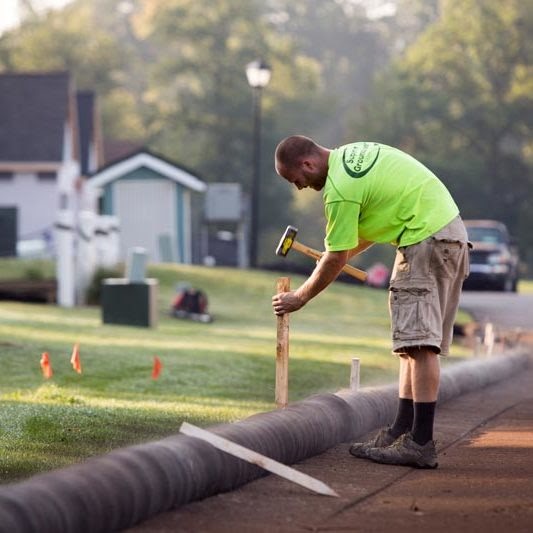
Stream Bank Stabilization & Lake Bank Stabilization
Stream bank stabilization refers to the restoration and protection of banks in streams, lakes, and other channels as a result of erosion. Typically this is done by planting vegetation, soil bioengineering, and other structural systems.
When choosing a bank stabilization method, consider the sustainability of the method, the required maintenance, and the impact on the natural environment including the water quality.
Vegetative plantings of trees and other deep-rooted plant species is a great bank stabilization method that is environmentally-friendly, permanent, and low maintenance.
We repair stream banks and shorelines the natural way. Our shoreline erosion control system uses compost filter socks, which are organic, vegetated, quickly installed, and require no heavy equipment or excavation for installation. This system allows vegetation to grow from the inside out to create a natural anchor between the bank and the stabilization system. This system is also completely customizable, and many vegetation options are available to meet your needs.
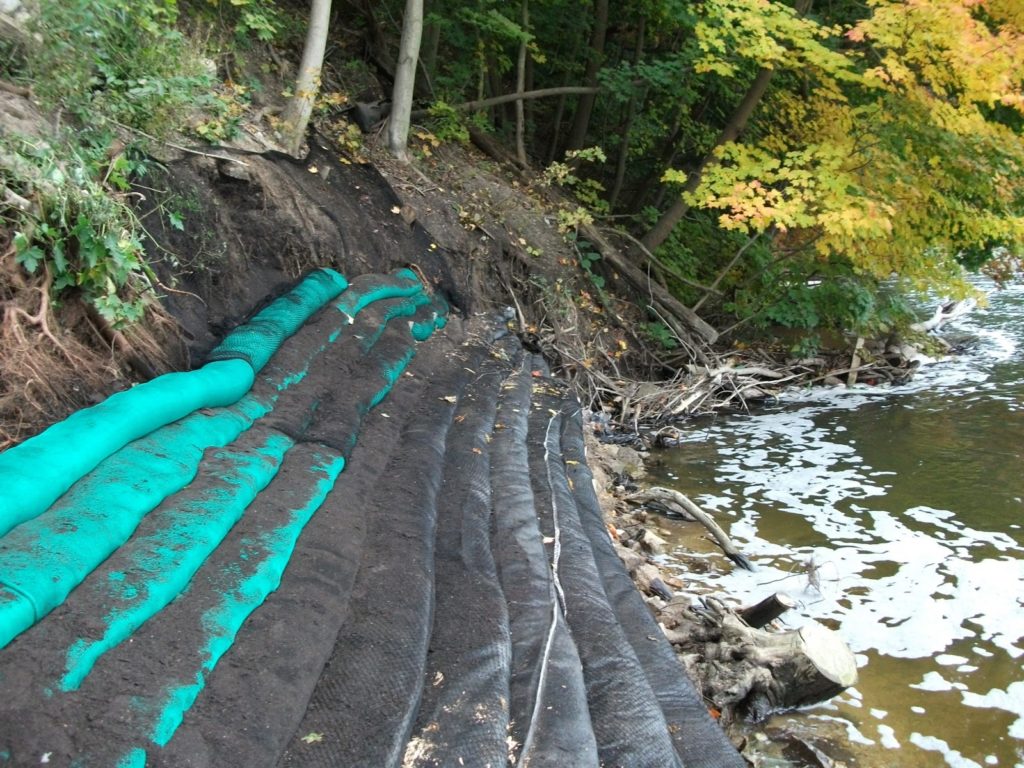
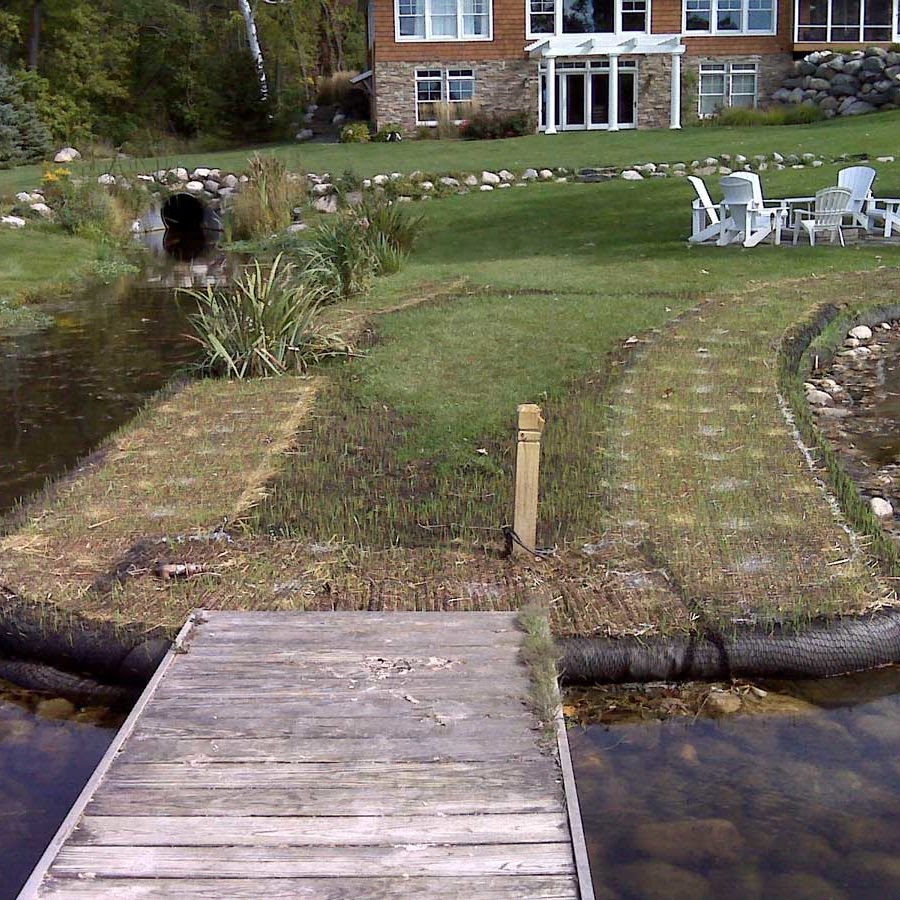
Applications:
- – Creek, stream, and riparian bank stabilization
- – Pond and lake shoreline stabilization
- – Sediment and stormwater retention/detention pond bank slope stabilization
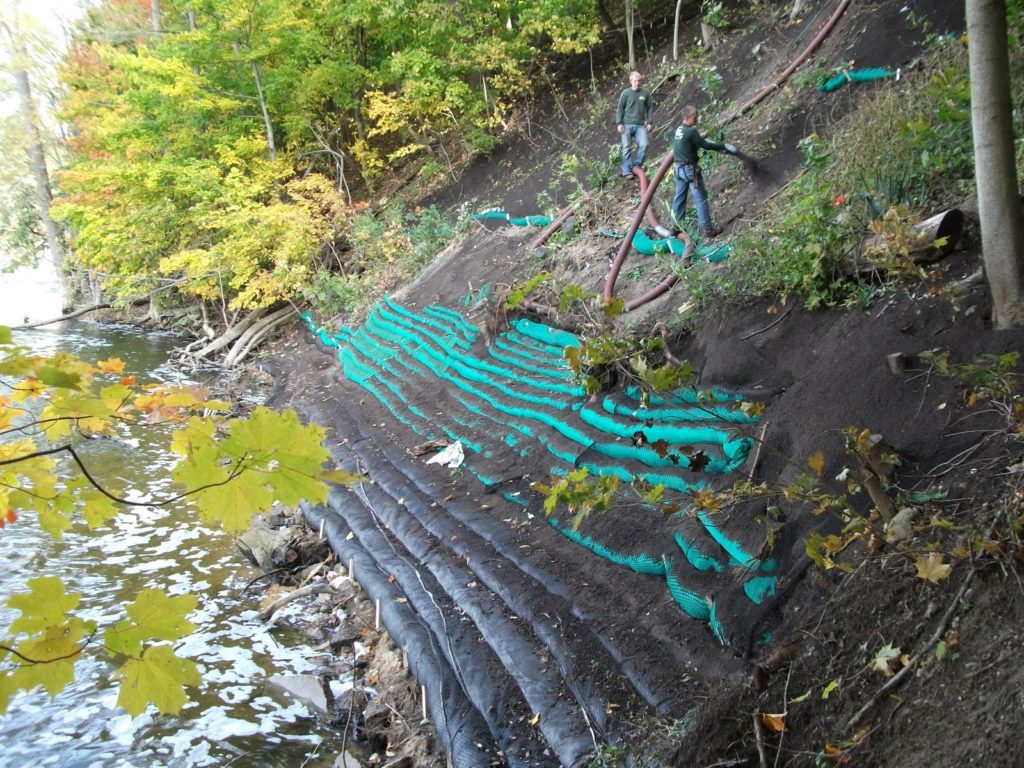
Erosion Control Methods for Slope Stabilization
On steep slopes, erosion is more likely to occur. Slope stabilization is highly important because an eroded slope can become barren. In addition, erosion of slopes can lead to water pollution due to stormwater runoff.
In order to prevent slope erosion, plant grass and other vegetation. Grasses are great for slope stabilization because of their roots. They also absorb rainwater and other precipitation, making water erosion less common.
Erosion control blankets work to add vegetation to slopes. Superior’s Compost Erosion Control Blanket combines nutrient-rich compost mixed with high-quality seed to create the perfect environment for quick vegetation establishment and slope stabilization.
Superior’s erosion control solutions outperform traditional straw blankets, straw matting, silt fence, and other traditional erosion control methods. Compost offers natural erosion control and protection, adds organic matter directly to the soil, offers superior water infiltration, and increases aeration in any soil type.
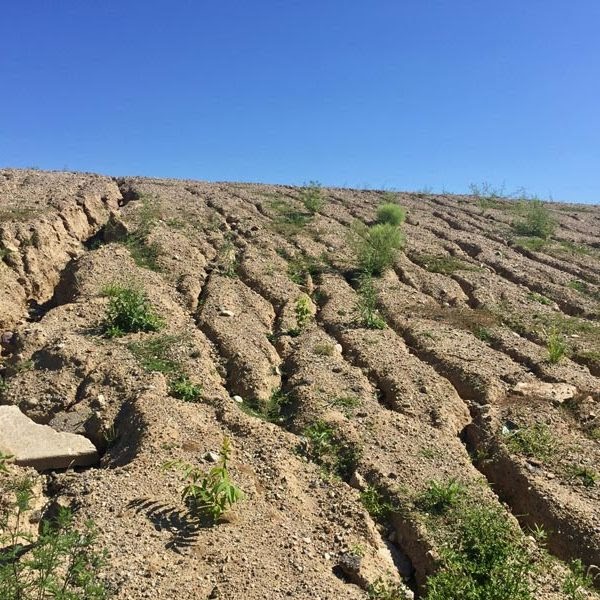
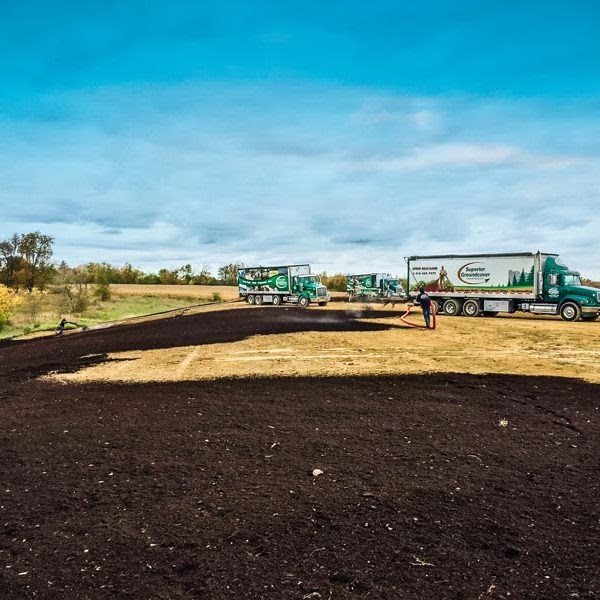
Erosion Control Landscaping Methods
In landscaping, plants are also used for erosion control. Some of the best plants for erosion control include fast-growing plants and plants that thrive in less than ideal soil conditions.
Best Plants for Erosion Control in Michigan:
- Iris Cristata
- Cleft Phlox
- Sumac
- Prairie Grass
- American Beach Grass
- Alsike Clover
- Lupine
- Medium Red Clover
- White Dutch Clover
- Black-Eyed Susan
- Milkweed
- Wild Bergamot
Michigan.gov has an in-depth guide on Vegetative Erosion Control Guidelines:
https://www.michigan.gov/documents/dnr/AppendixE-VegetativeErosionControl_193287_7.pdf
Retaining walls
Retaining walls are an effective way to control erosion on slopes. Retaining walls work by creating stepped flat surfaces instead of a long slope. On the flat surfaces, water can soak in versus flow down and cause erosion.
Visit our crushed concrete blog post to learn more about how to DIY install a retaining wall.
What are techniques to control soil erosion in hilly areas?
The main ways to control erosion in hilly areas are replanting vegetation and contour ploughing.
Superior uses erosion control blankets in order to speed up the vegetation growth and stop erosion faster.
Contour ploughing is the practice of ploughing at right angles, perpendicular to the slope along the hill’s contours. This helps stop water from flowing straight down the hill and prevent erosion.
What are methods of slope stabilization?
Slope stabilization methods can be categorized into the following categories:
- Decreasing erosion forces
Erosion is caused by natural and human forces. The two main ways to decrease the driving forces of erosion include changing the geometry of the slope and reducing groundwater. - Increasing erosion resistance
These methods include changing the geometry of the slope, reducing groundwater, and increasing the strength of the soil. - Surface stabilization
- Soil Improvement
Soil improvement can be done through consolidation, soil reinforcement, or bioengineering. - Retaining systems
Retaining systems for slope stability include MSE walls, gravity walls, soldier beams, tangent pile walls, and secant pile walls.
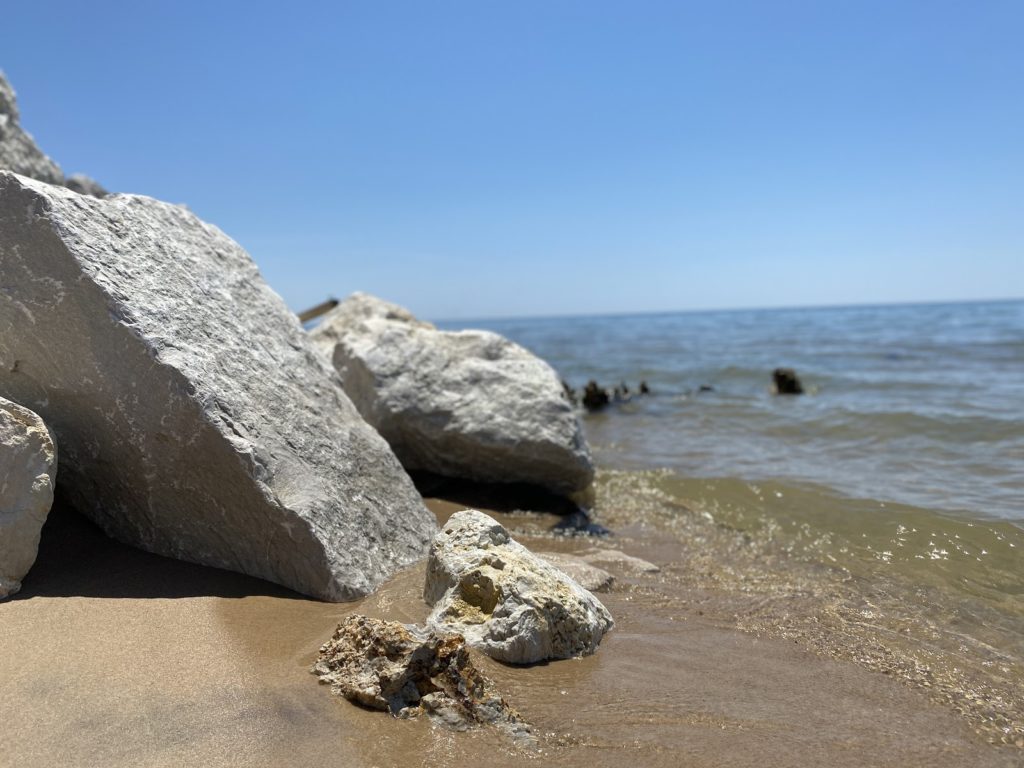
What are the best ways to stop lakeshore erosion?
Like slopes, shorelines are at a high risk of erosion. In Michigan, we are seeing the severe effects of rising water levels and shoreline erosion. There are long-term prevention methods for shoreline erosion, but often, shoreline erosion is an emergency and requires an immediate solution. With property and safety at risk, quicker shoreline erosion control methods may be necessary.
“In the past, much of the focus of shoreline erosion and its control has been on the coastlines of the oceans and the Great Lakes, where erosion has the potential to be most severe and have catastrophic consequences. The approach has often been one of pure structural engineering, without considering the influence of, or impact to, ecological systems. “ —Watershed Council: Understanding, Living With, and Controlling Shoreline Erosion: A Guidebook for Shoreline Property Owners Third Edition
We have an in-depth article on shoreline erosion, the causes, and prevention methods on our blog.
To stop lakeshore erosion, start with prevention. Make sure your home or structure is at least 100 feet away from the lake. Do not remove any vegetation including trees and other native plants. Only create impervious surfaces (driveways, sidewalks) when necessary.
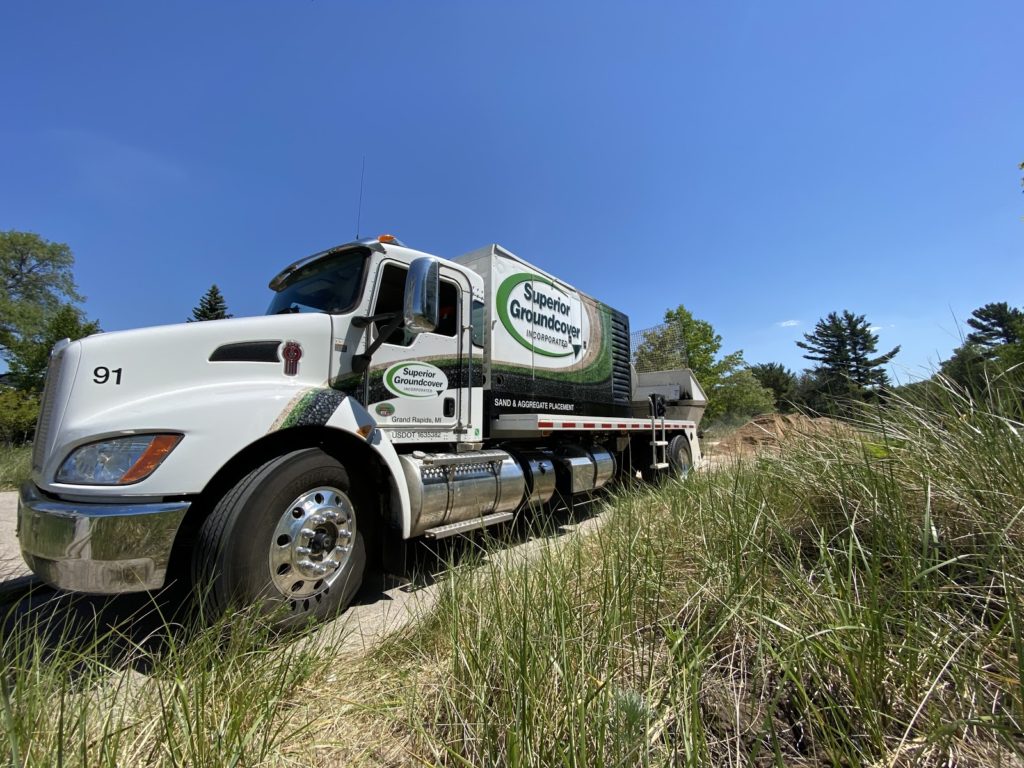
Soft-Armoring (Bio-engineering) is a shoreline erosion solution that is an alternative to seawalls. Soft-armoring supports the natural environment and protects property.
Rip-Rap is the use of large rocks or concrete blocks to form a graded seawall. The rocks absorb wave energy, reducing the impact on the shore.
Seawalls are another shoreline erosion control method. Seawalls should really only be used in emergency situations as they are highly detrimental to the lake environment and cause worsened erosion on the long-term. Our Sand Slinger Trucks allow us to efficiently install sand backfill behind seawalls. See how seawall installation works.
The Michigan Shoreline Partnership offers shoreline erosion guides that pertain to this region.
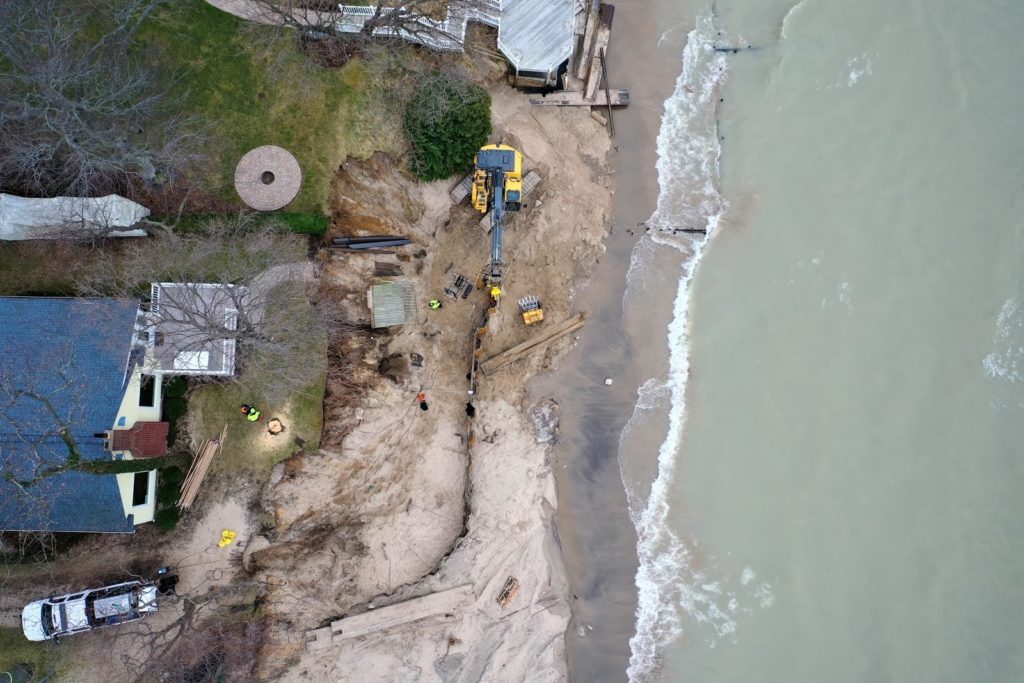
What is the best material for a retaining wall?
Retaining walls can vary vastly in design, size, and material depending on the location and the erosion situation. When choosing a material for your retaining wall, consider the look of the surrounding landscape, the budget, and the purpose of the wall.
Materials for retaining walls:
- Concrete Blocks
- Stone Veneer
- Poured Concrete
- Brick
- Wood
- Boulders / Rock
- Crushed Concrete
What is the importance of soil conservation?
Soil Conservation is the practice of preventing erosion and preserving soil fertility. Erosion is an issue for the environment because when topsoil is displaced, essential nutrients are lost, resulting in the inability for plants to grow. Additionally, when the topsoil moves, it can end up in our water systems. Topsoil often contains pesticides and other chemicals that are dangerous to humans and animals. Soil conservation uses different erosion control techniques.
Soil conservation is threatened by many different human activities including slash and burn farming, land overuse, and chemical contamination.
Soil Conservation Techniques
Soil Conservation techniques are environmentally-friendly techniques for farming that help prevent erosion. These methods include no-till farming, crop rotation, terrace farming, windbreaks, and the use of earthworms.
When should I start worrying about my shoreline or slope erosion?
“Many people in our society do not accept the moveable nature of shoreline property, but rather seem to expect that shorelines will be permanently fixed in perpetuity and recorded as such in land titles, similar to other surveyed property boundaries. Unfortunately, nature’s dynamic equilibrium and human expectations as well as our efforts to control it are often a poor mix.” —Watershed Council https://watershedcouncil.org/uploads/7/2/5/1/7251350/shoreline_erosion_3rd_edition.pdf
If you live along a shoreline or have property on a slope, the time to act on erosion control is immediately. Prevention is always the best method. Once erosion becomes noticeable and begins to create issues, emergency methods will be required.
Care for your property according to the recommendations of your region and do not remove native vegetation.
What are the warning signs?
If vegetation has been removed, water levels are rising, or heavy precipitation has begun to cause runoff, erosion is impending. Erosion is a natural occurrence that is necessary and expected, however, human activities and weather events can lead to worsened conditions.
Climate change has caused severely high water levels in the Great Lakes resulting in massive property loss. Because we know that erosion will occur, and we are living in a time when erosion is worsened due to human activities, the time to “worry” about shoreline and slope erosion is now.
A major warning sign is the water level. When water levels are high, waves are much closer to property and hit the shoreline with higher energy.
“The best way to identify and assess erosion problems is to check shorelines regularly and be observant of changing conditions. Warning signs of accelerated erosion problems include:
- A large area of bare soil along the shore, especially on a steep, high shoreline bank;
- Large or small gullies caused by overland runoff along the shoreline;
- A noticeable recession of the shoreline over a period of time;
- Leaning or downed trees with exposed roots on the shoreline;
- Large patches of unusually cloudy (turbid) water near a lakeshore, or unusually high stream turbidity, especially during periods of high water;
- Excessive deposits of sand or other sediments on the streambed, or very wide, shallow areas of a stream.” —Watershed Council https://watershedcouncil.org/uploads/7/2/5/1/7251350/shoreline_erosion_3rd_edition.pdf
Will Lake Michigan recede?
Water levels rise and fall naturally throughout the years. However, today’s water levels in the Great Lakes are more than record-breaking. Climate change is causing extreme changes to the lakes and revealing that many people have built far too close to the water. Erosion control methods can only go so far.
At this point — in June — water levels are climbing higher still. Lake Michigan and Lake Huron are expected to break more records next month and possibly beyond. While we can expect the levels to lower at some point, we don’t know when that point will be. According to data from the Army Corps of Engineers, it could be years before water levels recede.
